Are you a Quiet Speculation member?
If not, now is a perfect time to join up! Our powerful tools, breaking-news analysis, and exclusive Discord channel will make sure you stay up to date and ahead of the curve.
It's no secret I'm a big fan of Grixis Delver. This isn't because Grixis Delver is the best deck in the format: although it has killer Twin and Affinity matchups, it struggles with Abzan and Burn. It's also not because I'm one of those Treasure Cruise ex-pats from winter 2014 (I hated that card). I love Grixis Delver because it showcases the best in Modern innovation and deckbuilding. The deck exploded on the MTGO scene almost entirely based on the average Magic player, an evolution I discuss in an article on the deck's history. Although the deck is still making paper inroads, and players are still trying to figure out the best list, Grixis Delver has a lot of promise for the next few months. But as any competitive player knows, you can't get through tournamets on a strong game 1 alone. Sideboards and games 2 and 3 are much more important, and a real place for decks to improve their matchups and either seal a match or recover from a bad game 1.
This article is about fine-tuning the Grixis Delver sideboard. Sideboarding is one of the most underappreciated parts of deck building, particularly by the average Modern player without a lot of tournament (let alone professional) MTG experience. Although it's important to have a strong maindeck as your core, it's just as important, if not more important, to have a strong sideboard that fixes bad matchups and solidifies good ones. If we can sharpen up the Grixis Delver sideboard, we can dramatically improve our chances of taking this deck to a strong tournament finish.
[wp_ad_camp_1]
Identifying Key Matchups
Modern is one of the hardest formats for sideboarding. There are lots of decks to consider, lots of high impact cards to squeeze in, and lots of matchups that come down to one or two decisive cards. Players at all levels of Modern have weighed in on these issues, and although I don't want to speak too much to this conversation, I do want to acknowledge it as a shaping element of sideboarding. This is perhaps more important with Grixis Delver than a lot of other decks because Grixis Delver has some very polarizing matchups we need to address.
In my most recent article on win rates, I used data from MTGO to analyze matchups between key decks. Based on these findings, and from our own more qualitative experiences with the deck, we can immediately identify some important matchups sideboarding needs to fix. Just for reference, here are those numbers again.
- Top Decks prevalence: 8.4%
- Deep Dive prevalence: 7.2% (68)
Deep Dive matches: 213 - MWP: 48.4% (p=.79)
vs. Abzan: 10% (1/10)
vs. Affinity: 63.5% (10/16)
vs. Burn: 18.2% (2/11)
vs. Jund: 50% (4/8)
vs. UR Twin: 81.2% (13/16)
vs. Amulet Bloom: 28.5% (2/7)
To start, these aren't the "true" win rats of decks. These are observed win rates in a representative sample. That means we can normalize all of these closer to 50% to estimate "true" MWPs. For instance, Grixis Delver doesn't actually have a 10% win rate against Abzan. It's probably closer to 30%-40%. Same with Twin: probably closer to 60%-70%. But even so, we can use this to identify the matchups that need improvement.
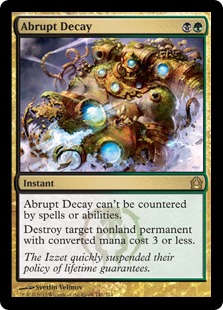 That brings us right to Burn and Abzan. It's bad enough having a rough Abzan matchup. Although Abzan's metagame share is falling, it's still a solid tier 1 deck and an important matchup every deck needs to face. It's also a deck that is unlikely to ever go away, and a great choice players will bring into unknown metagames. Being bad against Abzan is not a good place for upcoming decks to start their rise to fame. That said, Abzan is also a hard deck to sideboard against and beat period, even if you have a maindeck suited to the matchup. So it's also not the end of the world if we can't turn this around in games 2/3 entirely. Even just bringing this to 45-55 would be a win in my books, so that's probably what we are going to aim for.
That brings us right to Burn and Abzan. It's bad enough having a rough Abzan matchup. Although Abzan's metagame share is falling, it's still a solid tier 1 deck and an important matchup every deck needs to face. It's also a deck that is unlikely to ever go away, and a great choice players will bring into unknown metagames. Being bad against Abzan is not a good place for upcoming decks to start their rise to fame. That said, Abzan is also a hard deck to sideboard against and beat period, even if you have a maindeck suited to the matchup. So it's also not the end of the world if we can't turn this around in games 2/3 entirely. Even just bringing this to 45-55 would be a win in my books, so that's probably what we are going to aim for.
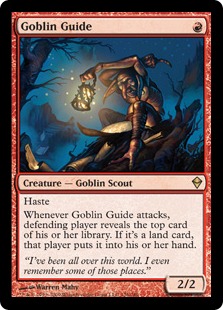 Dat Burn matchup tho. Burn is currently Modern's most popular deck on MTGO, and one of the big three in paper. It's cheap, strong, proactive, linear, and has all the trappings of a great choice for Modern events. This is not a deck you can have a terrible matchup against, especially on top of a bad Abzan matchup. Going into an event with 30%-40% win rates against two decks that make up a collective 20%+ of the format is tournament suicide. You might as well show up with 5 Color Humans (rock on, Champion of the Parish!!). This is a matchup we absolutely, positively, no-questions-asked need to fix if we want Grixis Delver to have a competitive shot. To some extent, the deck gets carried on the back of a strong Affinity and Twin matchup, but we don't want to bank on dodging Burn and Abzan at the Grand Prix level. So when we start thinking of cards, Abzan and Burn are the two decks we need to keep in mind. We also don't want to lose sight of other decks out there, like Amulet Bloom, Scapeshift, Zoo, Merfolk, RG Tron, and everything else you might hit at a Modern event. But Burn and Abzan will be immediate priorities.
Dat Burn matchup tho. Burn is currently Modern's most popular deck on MTGO, and one of the big three in paper. It's cheap, strong, proactive, linear, and has all the trappings of a great choice for Modern events. This is not a deck you can have a terrible matchup against, especially on top of a bad Abzan matchup. Going into an event with 30%-40% win rates against two decks that make up a collective 20%+ of the format is tournament suicide. You might as well show up with 5 Color Humans (rock on, Champion of the Parish!!). This is a matchup we absolutely, positively, no-questions-asked need to fix if we want Grixis Delver to have a competitive shot. To some extent, the deck gets carried on the back of a strong Affinity and Twin matchup, but we don't want to bank on dodging Burn and Abzan at the Grand Prix level. So when we start thinking of cards, Abzan and Burn are the two decks we need to keep in mind. We also don't want to lose sight of other decks out there, like Amulet Bloom, Scapeshift, Zoo, Merfolk, RG Tron, and everything else you might hit at a Modern event. But Burn and Abzan will be immediate priorities.
Sample Sideboards
Here are three sample sideboards I want us to think about before we make our own. To some extent, it's dangerous to look at sideboards without the context of a maindeck (especially when you have contextual cards that only work in certain maindecks, like Stubborn Denial). But in the interest in keeping this focused on boards and keeping this relevant to a wide range of Grixis Delver players, I'm going to maintain an emphasis on sideboards alone. It will help us isolate similarities and differences between the lists to find things that probably work and things that might not.
Claudio Zurlo's Grixis Delver Sideboard (Ovinospring 2015)
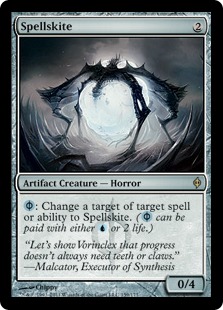 1 Flashfreeze
1 Flashfreeze
1 Dispel
1 Negate
2 Blood Moon
1 Izzet Staticaster
3 Dragon's Claw
2 Vandalblast
1 Dismember
1 Grim Lavamancer
1 Engineered Explosives
1 Spellskite
The first board is from Claudio Zurlo's 4th place finish at Ovinospring 2015, an Italian Modern event that took place on May 1. Zurlo played a pretty standard maindeck with a versatile sideboard, packed with singletons and flexible card choices. We see a lot of these cards in other Delver sideboards: Dispel, Negate, Moon, Claw, Vandalblast, etc. It's hard to say with certainty if there's a "stock" Grixis Delver board yet, or even if "stock" boards exist at all, but this one is pretty close to that standard.
Nate Kahovec's Grixis Delver Sideboard (SCG Portland)
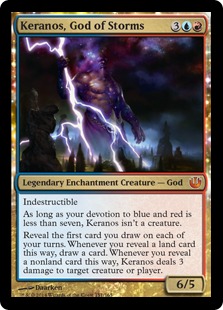 2 Dragon's Claw
2 Dragon's Claw
2 Blood Moon
1 Dismember
1 Dispel
1 Flashfreeze
1 Kolaghan's Command
1 Magma Spray
2 Negate
1 Vendilion Clique
1 Keranos, God of Storms
2 Vandalblast
Looking at another recent Grixis Delver finish, we see Nate Kahovec's 2nd place finish at SCG Portland from May 3rd. Kahovec's main was very similar to Zurlo's, differing on only a few cards and competing in equally diverse Modern fields. His sideboard, despite some similarities, had a bunch of cards that were not present in Zurlo's list. Keranos is interesting here, as is that Clique and Spray, and suggest a different metagame focus than we saw in the list above.
dimk's Grixis Delver Sideboard (MTGO PTQ)
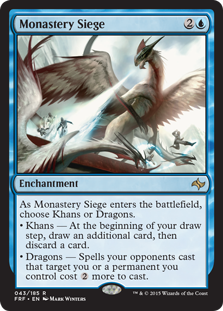 2 Deprive
2 Deprive
1 Kolaghan's Command
2 Blood Moon
2 Dragon's Claw
2 Engineered Explosives
2 Izzet Staticaster
2 Monastery Siege
2 Vendilion Clique
Finally, here's another take on the Grixis Delver sideboard and maindeck as played by dimk at his 4th place finish at an MTGO PTQ on May 2nd. It's important to look at MTGO lists on top of paper ones to see how different sideboards form in slightly different metagames. dimk's list, in addition to having more Gurmag Angler than other lists, along with different countermagic, has a bunch of interesting cards in the sideboard for us to consider. The board includes Siege, as well as a lot of two-ofs instead of singletons.
This is a good starting point for us to break down the different card choices and see commonalities between different sideboards. Many of you are probably already pulling out some of those similarities and differences, and I want to highlight the most important in the next section.
Optimizing the Sideboard
Looking over the sideboards listed above, plus the dozens of others we can find online for successful Grixis Delver decks, we see a few common cards emerge. I don't think these cards are non-negotiable in any metagame, but they are clearly strong now and you would have to make a very strong case against them if you wanted them ditched. I'm going to talk about those cards first, as well as give what I think is the optimal number of each of them.
It's not okay to have a bad Burn matchup in Modern. Or rather, it's not okay to accept a bad Burn matchup without at least trying to improve it. Dragon's Claw is one of the best anti-Burn cards in Modern because it both screws up Burn's lethal damage math, and because it benefits deck that are already using red spells. Grixis Delver might not be overflowing with red, but it has enough spells (10-14 or so, depending on the build), that you are likely to at least gain back 2 life off this card. Claw comes down early and puts Burn in bad positions. It's particularly good in decks with clocks of their own, which can abuse the lifegain to buy time for their own creatures to win the game. Grixis Delver is such a deck. The reason we are running 3 and not 4 is because Burn is the only matchup where you really want this, and I think we can have enough overlapping sideboard slots elsewhere that we don't need to be too all-in against Burn. We need to maximize sideboard slots in Modern, and Claw is too narrow to be 4 cards deep on.
1 Dispel, 1 Negate, and 1 Flashfreeze
Do not play Grixis Delver without these cards in your board. Depending on your metagame, you could even go up to 2 on either Negate or Flashfreeze, just because the cards are so important. Keep Dispel at 1 though. Overall, these spells pass the versatility test with flying colors. In many matchups, all of them are either Counterspells or discounted Counterspells with no drawbacks. This is true in both the trouble matchups like Burn and Abzan, but also other important matchups like Twin, Infect, Scapeshift, etc. Just looking at these three cards, we see three compelling reasons why we don't need 4 Claws in the board. Burn tends to run 10-12 creatures and then about 26-30 other spells, so these cards are actually just drawback-free hard counters in that matchup. They buy you time and force Burn to put more cards into their critical mass of spells needed to kill you, something Burn can struggle to do. Add to that their versatility across the format and you have three cards that you should never exclude from your Grixis Delver board.
As most Modern players who have been under the Moon know, this card is just instant game-over against so many decks. I admit that Blood Moon isn't as strong today as it was in the past, particularly with the dominance of Burn, the continued power of Merfolk, the rise of Grixis Delver (can't forget the mirror), etc. But there are still enough matchups, namely stuff like Tron, Amulet, Scapeshift, Zoo, Abzan, etc., that it's absolutely worth keeping as a "core" slot of the sideboard. I'm particularly fond of Moon in that Abzan matchup, and that's why I'm up to 3 Moon instead of a more conservative 2. A resolved Moon against Abzan with threats on the field is very hard for them to handle. Just the threat of Moon forces Abzan players towards very conservative manabase development, which can help you stay aggressive and not get stymied by a giant Rhino too early. Sure, the Abzan player is going to discard this and blow it up with Decay, but Moon makes up for that weakness by being a strong topdeck even later in the game, and for moving Abzan's disruption away from your other targets. All of that said, if Abzan keeps dropping its metagame share, consider dropping Moon to 2 copies to keep pace.
It doesn't get better than Kolaghan's Command in the versatility department. Need to recover resources against Abzan? KC has your back. Need to break Batterskull or some Affinity card? KC is there. Need to zap an aggro problem? Look no further than KC. Trying to get card advantage over control? Two letters: KC. What KC lacks in individual power in all those departments, it makes up for in flexibility and pure, unadulterated value. Aether Shockwave sucks. So does A-Shattered Seraph. But paying 3 mana to blow up an Inkmoth and a Plating? Way better. Or kill a Hierarch/Ooze and return a Snapcaster? Pure frikkin value. There will be matchups where KC's versatility does not make it valuable enough to run. For instance, this is not a card you want in the Burn matchup. But in the matchups where it's good, it's very good, and you will almost always love topdecking it on turn 4 or so.
Speaking of versatility, Rakdos Charm has been giving red/black mages some versatile sideboard action for years, even before KC came along. The big reason to run Charm in a deck that already has a good Twin and Affinity matchup is because Charm gives you additional tools in that matchup while also solving a big problem: the graveyard. In a four round MTGO daily, you can gamble on avoiding graveyard-based decks. You can even get away with this in a 7-8 round local event. But a two day GP? Good luck. You are almost guaranteed to hit something cute like Dredgevine, Living End, UW Tron, 4C Gifts, Griselbrand Reanimator, or any of the other big graveyard decks of the format. And with Collected Company Podless Pod starting to make more Modern waves, the graveyard is only becoming more important. To some extent, you can battle these decks with your countermagic and hard removal. But at a certain time, you need that graveyard interaction to seal a game, and Charm gives you that badly needed firepower to threaten graveyard decks where it hurts the most.
That brings our sideboard core to about 11-12 cards, depending on how many copies you include of stuff like Moon, Claw, and Charm.
3 Dragon's Claw
3 Blood Moon
2 Rakdos Charm
1 Kolaghan's Command
1 Dispel
1 Negate
1 Flashfreeze
This also gives you 3-4 slots for other options, which is a nice bit of extra flex you can use in unknown metagames or at large events. Before wrapping up today, I want to talk about some of those other choices you can use, both in those 3-4 slots, and even in place of some of the cards listed here.
Other Sideboard Options
When filling out the rest of your sideboard, or if looking to attack the metagame from unique angles, here are some cards to consider. Some of these cards are, in my opinion, weaker than other options above. Others are good cards but are more contextual, so only run them in certain metagames.
Death's Shadow is one of the techier solutions I have seen to Burn. Instead of stopping the damage, Shadow embraces it, building a massive body as you suicidally race the Burn deck. It's a cool way to play the matchup, and I think it can definitely work in some games. My big issue with this plan is that we aren't faster than Burn to begin with, and Shadow isn't fast enough to win that race. The big exception to this is if you are already playing Angler and Stubborn Denial, in which case Shadow becomes a lot better. So if you are playing a "bigger" Grixis Delver list, consider 3 Shadow in the board. If not, stick with Claw; it fits our tempo gameplan better anyway. Bonus points if your opponent used Destructive Revelry to try to preempt Claws and you dropped Shadow instead.
if your metagame has lots of combo or control decks, Vendilion Clique becomes one of the better cards around. Flash on a 3/1 Flyer alone is huge. Add the disruptive and information elements and Clique is practically maindeck material in some lists. A very strong singleton choice in the sideboard. The only reason I wouldn't maindeck it is because it's not the best card against decks like Affinity and Burn, and there's enough aggro going around these days that you want the option to bring it in when needed more than you want to be stuck with it in game 1.
Deathmark
Abzan decks got you down? +1 Deathmark has you covered. This card is becoming a lot better with all the Podless Pod style decks cropping up on both MTGO and in paper, not to mention the rise of Jund even as Abzan's share has declined a bit. If you go to a GP in June, strongly consider adding one of these to the board. Unknown metagames tend to attract lots of Abzan, and Deathmark gives you yet another bullet to improve your games 2/3 against the format's premier midrange deck.
Lingering Souls causing trouble? Tired of mana dorks? Sick of Affinity's X/1s? Izzet Staticaster has you covered. A big reason to look to Staticaster these days is because she's good against Abzan and Abzan Liege decks, and because we are seeing more and more green-based Collected Company decks where Staticaster really shines. Serious metagame call here, but in the right matchups, she will definitely reward you for boarding her in.
Monastery Siege
This is the only card on the list I view as a total trap card. As a solution to Burn, Monastery Siege is often just too little, too late. Can you imagine tapping out on turn 3 to cast this? Burn just keeps on attacking or just pays the extra mana to still get in a Bolt effect on top of a 2 point Swiftspear swing. You might as well do nothing with your turn. This is way better in Merfolk, where you can get a much stronger board presence before dropping this on turn 3 (particularly with an active Vial). But in Delver, you probably only have one creature on the board when you drop it, which isn't the kind of pressure you want in combination with Siege. And god forbid you cast this into an active Eidolon. In all the other cases where you might think Siege is good (delve fuel and dig in the mirror, removal protection against Abzan, etc.), there are almost always better options.
There are dozens of other cards we can consider for the deck, including Grim Lavamancer, Magma Spray, Vandalblast, Olivia Voldaren, etc. Instead of evaluating all of these cards and going for another thousand words, I think it's better to use some of the principles in this article to evaluate those cards (and others not listed) on the side. As long as you are sticking to your core sideboard and not violating the deck's maindeck roles, you have a lot of flexibility in the board. Also, remember that Grixis Delver runs between 10 and 12 cantrips, which means you can be a little more conservative with your card counts in the board. Shaving down to 2 copies from 3 is totally reasonable with cards like Visions, Probe, and Scour in the maindeck.
So get out there and sideboard up your Grixis Delver lists. It's not enough to have a good game 1 these days, and if we want this deck to enjoy some tournament success in June, it needs to be on the back of a strong sideboard. Let's see if we can get there!


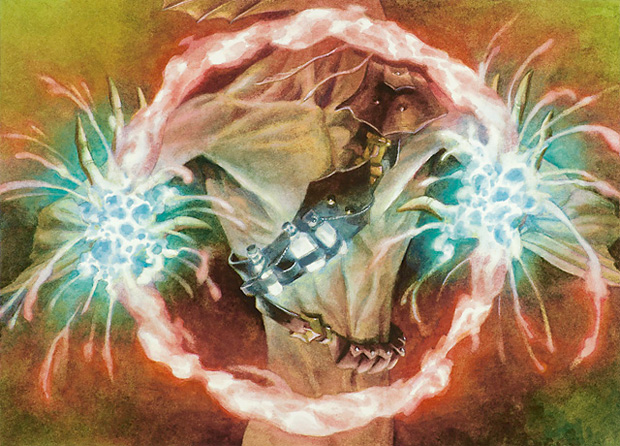

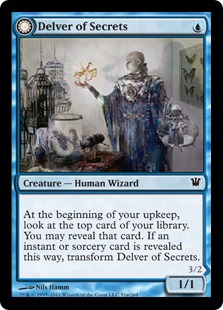
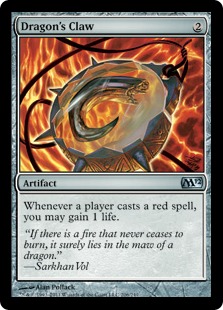
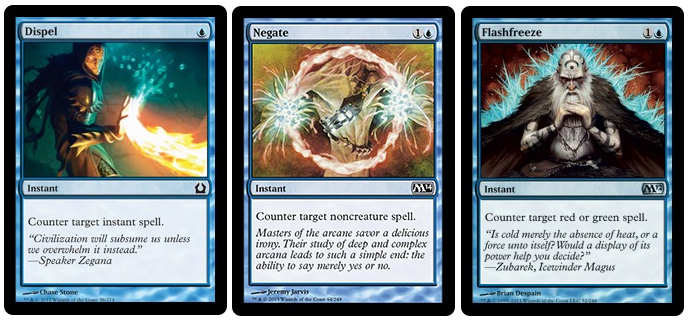
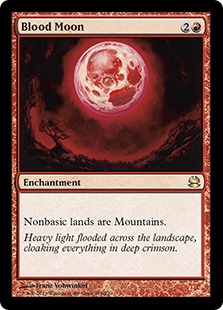
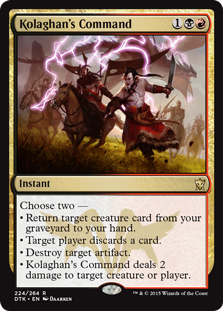
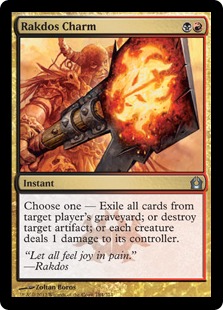
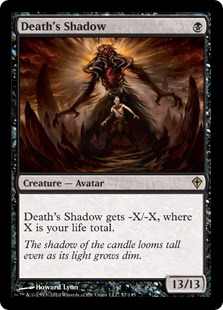
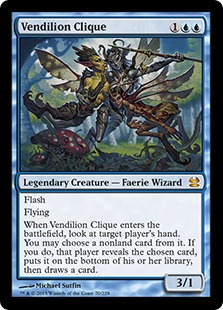
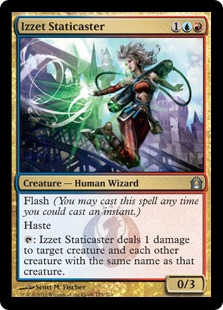


I think the big card you’ve missed in this analysis is Spellskite – an almost automatic 2-of for me, it has game against Twin, Affinity, Infect and Burn.
I’m also a big fan of Blood Moon, but with sideboard slots at a premium, along with the number of cantrips Delver runs, that it’s bad in multiples, our opponents are going to play around it in game 2 AND without a dedicated manabase – it’s not that much of a blow-out. I’m currently on 2 in my Twin deck and would run 2 in my Delver list as well.
(What I mean re the manabase is that you need a better base than 8 fetches of which only 6 fetch Islands and 6 fetch Swamps to run Blood Moon safely – on top of that you’ll likely be using the first fetch to find a red shock land)
I can’t agree more on Dispel, Flashfreeze and Negate – no blue deck should leave home without each on of those sleeved up in the sideboard.
If Abzan is getting you down – what about a singleton Sower of Temptation?
I think Countersqaull over negate, assuming you are running at least one u/b land in the flex slots. The extra damage can matter when we are a aggro-control deck.
I like the sewer idea, but is it better than olivia? Olivia’s cost vs sewer’s fragility. Olivia’s versatility vs Sewer’s speed. What do you think?
Also, what is your thoughts on Sulfur elemental? I’m more than half tempted to run one in the side for junk specifically, and coincedentally any soul sisters or d&t I might run into.
I personally love sulfur elemental as a 1 of in the board, helps fight through BW tokens, provides aggression against abzan and little kid decks, and not to mention soul sisters. I find him welcomed if you can provide backup with it against anthems.
My concern with Olivia is that she doesn’t play nice with our Blood Moon plan (her control effect requires BB), granted her ping can get out of hand regardless so perhaps its good.
Untapping with Olivia does put you in a great spot – so I’m definitely not against playing her over Sower. In fact there’s a very good reason to do exactly that.
Then again – why not both?
(For reference though, I do prefer playing with 19 lands, and am coming round to playing ‘big’ Delver rather than PyroDelver – atm I’m sitting with MN’s hybrid creature base from the original article)
Whats your thoughts on Jace the Architect of Thought as a 1 of? Or would it be better to use a different card like Keranos or Outpost Siege?
Since you ask about these, I’m going to go through most of the grindy match cards with you.
Keranos represents both card advantage and damage, but with the maindeck being at least 2/3 spells, Keranos is much more likely to be a lightning bolt every turn than a card advantage engine. He fills a very controlling roll. If you think this is what Delver wants, Keranos is your choice.
Outpost siege can do two things: ping when something dies and draw you a sorcery. If you maindeck counterspells, this card isn’t all that spectacular. My rating for this in delver is poop/10. Not what delver wants. I can be wrong, just as much as person can be, but I think no on this one. I’d almost rather have chandra, pyromaster.
Jace. He seems good on the surface. Stops Exarch combo with the plus. Stops souls with the plus. Provides card advantage. Ultimate can be…useful…but not a game winner unless you decided to board it against Tron. He and Keranos are very different in playstyle, but if it’s cards you need to draw and 1/x’s you need to stop, he’s definitely your man.
Next, Batterskull. Not as necessary as he used to be now that Tasigur is in the deck, but he still grinds very well. If it comes down to it, you can even strap it to delver and smash for seven vigilance lifelink flying. Pretty good. Don’t forget the end of turn return it and replay it to get virtual card advantage through creatures. You can even board it against burn, it just needs counter backup so that they don’t burn you out turns 1-5+.
Last grinder I will state is Ashiok. Not a common one. He works in a fashion that slowly kills your opponent in the form of mill while subsequently giving incidental board presence. He works in any match you expect will go long, especially one with maindeck creatures. All abilities are relevant and he is difficult to destroy with most non-abrupt decay removal spells. Needs more testing than I have been able to do.
I feel like lingering souls is what really gives us the problem in the junk matchup, and izzet staticaster is a good answer
as for bloom and burn great sideboard ideas 🙂
Lingering Souls is certainly annoying, but i feel like the decklists that have the most trouble with that card are the ones not running enough Remand and Electrolyze. I like 2 of each in the maindeck, but these seem to be the first card s people cut for the odd one ofs, or to run Deprive.
The Young Pyro version of Grixis Delver is so tempo, i still think two Remands and 2 Electrolyze are a must.
Solid article. I’m especially liking the mention of Kolaghan’s Command, as I feel that it’s an under-explored card. I do feel that justaguy has a good point in that Spellskite is definitely a strong sideboard choice here, though – your Twin matchup may already be strong, but Kite helps take the sting off Abrupt Decay in the Abzan matchup, and it can eat a burn spell or two for you (especially relevant since Grixis Delver has mainboard access to blue).
Here’s an off-the-wall suggestion, though: how do you feel about Engineered Explosives? I like squeezing that into any deck with 3 colors that isn’t linear aggro, and I’m rarely disappointed with it. It can be phenomenal at clearing the way for a Tas or an Angler, and you can usually tune it to avoid whatever’s on the table for you at any given moment. Thoughts?
I personally always run it as a 2 of. Helps as our catch all answer to tokens or any random deck you can run across.
Why not replace instances of negate with countersquall? It doesn’t seem to be very hard on the manabase and two life lost is by no means insignificant.
One reason is that Negate is often used as part of your turn 3 – Tasigur/Angler hold up counterspell protection play. And having access to UBB on Turn 3 is difficult.
Also allows us with with 4 mana to Terminate and protect (again UBBR is a difficult colour combination to have open).
This may be fixed with manabase adjustments, but I like fetching Islands as soon as I can. As well as probably needing to fetch a Swamp once we have the Blood Moon plan active. Overall Negate is just more consistent.
What can the Grixis deck do against a turn 0 leyline of the void?? Tasigur and angler would be dead cards then. Unless it is boarded out g2 and 3 against jund? Thoughts.
I don’t think it is worth it for a jund deck to play a leyline in the 75, first and foremost. It doesn’t win against delver and it doesn’t affect many other matchups in a significant way.
Delver beats leyline by playing through their deck normally, but being forced into your gameplan a little more. You also have one less card in hand that you can 1 for 1 them with. If jund is on the play, worse off entirely, less cards. If on the draw, better, but delver can still out tempo you if their hand is all gas that doesn’t care about a leyline.
Leyline unnecessary and risky against delver. There are much better sideboard cards against a deck that is an easier matchup anyway
What do you think about inquisition of kozilek as a 2 of
What do you think about inquisition of kozilek as a 2 of?